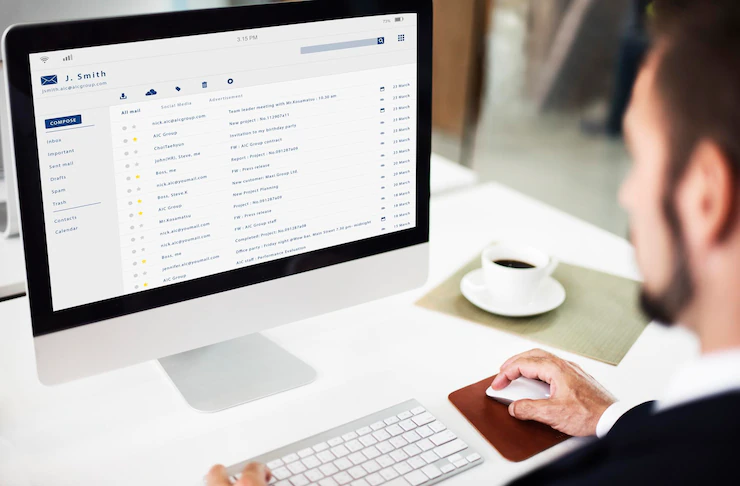Why Life Insurance is Essential for Every Indian Household
Barsha Bhattacharya, 1 hour ago

Email marketing has become one of the supporting pillars of marketing for global brands.
Email marketers use multiple strategies to engage the user, promote products, build relationships and increase brand awareness.
Marketo email templates help the marketers set up elaborate and impressive brand awareness campaigns with ease.
However, if not done correctly, it can cause deliverability or inboxing problems that prevent your emails from reaching your subscriber’s inbox. Below you will find the common reasons for inboxing problems, and how to overcome them.

Email service providers and clients are always updating their spam filter with new phrases and words. Each time someone receives an email, the filter automatically searches for these phrases and, if identified, sends them to the spam folder.
Nowadays, they have also started using sophisticated algorithms that identify suspicious attachments, bulk emails, and bad headers and mark the email as spam. Even using simple words like free, discounts, or using exaggerated punctuation marks can trigger the spam filters.
Frequently triggering the spam filters will affect your sender’s reputation and deliverability rates. Therefore, if you use such phrases in your email copy, it’s time to update it.
Depending on your email campaign activity, the internet service providers (ISPs) assign you a sender’s score. A low sender’s score is directly responsible for throttling your email campaigns and creating inboxing challenges.
The ISP may redirect the emails from such senders directly into the spam folder. In some cases, the email will not get delivered at all. The ISP analyzes your spam complaints, inactive subscriber’s in your email list, and bounce rates, and checks their blocklists, before assigning a score. You need to optimize your templates and clean your campaigns to improve this score.
Inboxing challenges can arise even after your email is perfectly delivered to your subscriber’s inbox. Ideally, you want the recipients to engage with the email, forward it, star it, and click on the links and CTA buttons, as all these are positive interactions.
Alternatively, leaving it unopened, deleting it instantly, or marking it as spam will affect the future deliverability rate of your emails.
High bounce rates also affect your deliverability rate and negatively impact your sender’s reputation. Emails bounce because they can not be delivered to the intended inbox and have nowhere else to go. This mostly happens when email marketers buy or rent email lists.
These lists are unkempt and have tons of inactive, incorrect, and cold accounts. Emailing people on such lists also implies that you are sending your emails without their consent, further damaging your reputation.

Single opt-ins are effective for brands that want to increase their subscriber list. But, if you want to reduce your bounce rates while building a list of highly engaged subscribers, you need to adopt the double opt-in confirmation method.
As the name suggests, the double opt-in form sends a second email to the subscribers to verify their email address. They are added to the list, only after they complete the second step. It ensures that people are genuinely interested to interact with the company and want to receive their emails.
Similarly, you need to simplify the opt-out or unsubscribe process for the customers. According to the CAN-SPAM Act, email marketers need to properly highlight the unsubscribe link and provide detailed instructions to make the process easier.
Nonetheless, you can avoid the negative connotations of the word subscribe, by entering a link to help the subscribers “manage their preferences.”
Having a hygienic email list solves most of your email inboxing challenges. Cleaning your email list includes removing inactive accounts and unengaged subscribers. Thereby, keeping only the recipients that want to interact with the brand. Maintaining your email list is not a one-time thing; you need to do it regularly to avoid any dents in your sender’s reputation.
You can use a segmentation strategy to segment the customers that have stopped responding to your emails. After a few weeks, you can send them a re-engagement email to recapture their attention. Remove them from the list if they fail to respond to your re-engagement email campaigns.
Setting the expectations for your customer is considered to be one of the best practices in email marketing. Email marketers should use the welcome email series to inform the subscriber about the type of content they will be sending, the frequency of emails, and any other disclaimers.
You should also provide an option to the subscribers to adjust their preferences and frequency of your emails. In a way, allowing them to interact with the company on their terms.
Email marketers can start sending highly relevant content to their subscribers by using segmentation and personalization strategies.
Segmentation allows you to divide the customers into different segments based on their gender, age, location, product preference, purchase history, and other important demographics. As a result, you can fine-tune your product recommendations and engage your customers.
Lastly, personalization tactics help nurture the customer’s relationship with the brand. Personalized emails make the customers more loyal and increase their engagement which, naturally, decreases inboxing problems.
Marketo email templates have optimized dynamic elements that help novice email marketers start their personalized marketing campaigns.
For your campaigns to be successful, you need to keep your deliverability rate at around 80%. But, if the rate is below it, you need to do a complete overhaul by following the strategies mentioned above.
Additionals:
Abdul Aziz Mondol is a professional blogger who is having a colossal interest in writing blogs and other jones of calligraphies. In terms of his professional commitments, he loves to share content related to business, finance, technology, and the gaming niche.